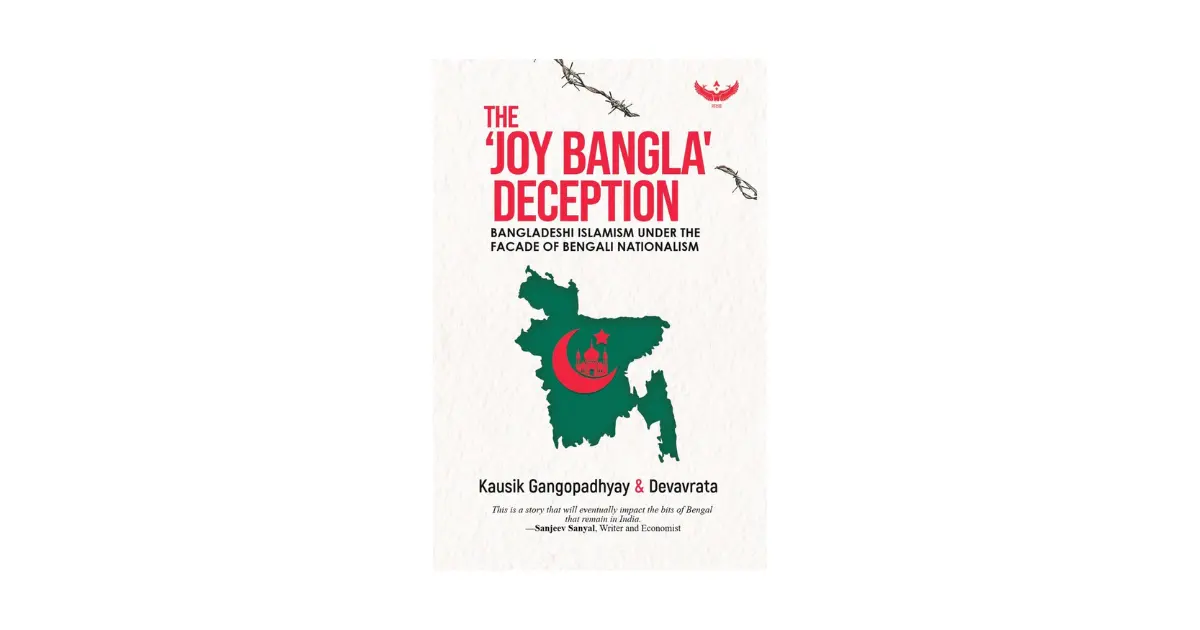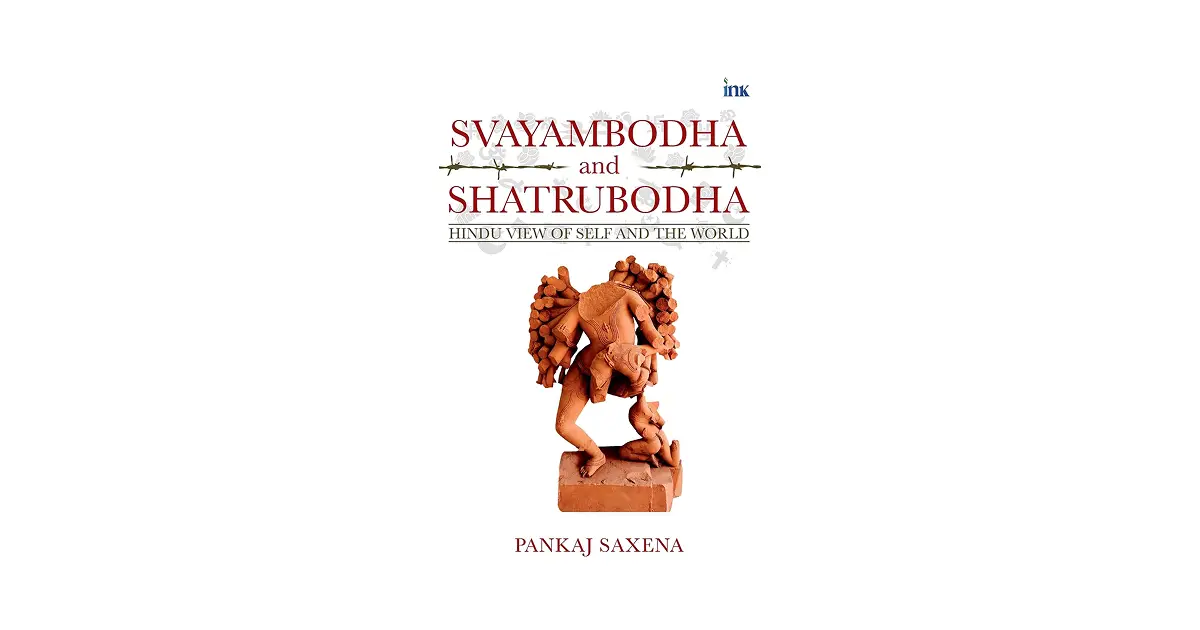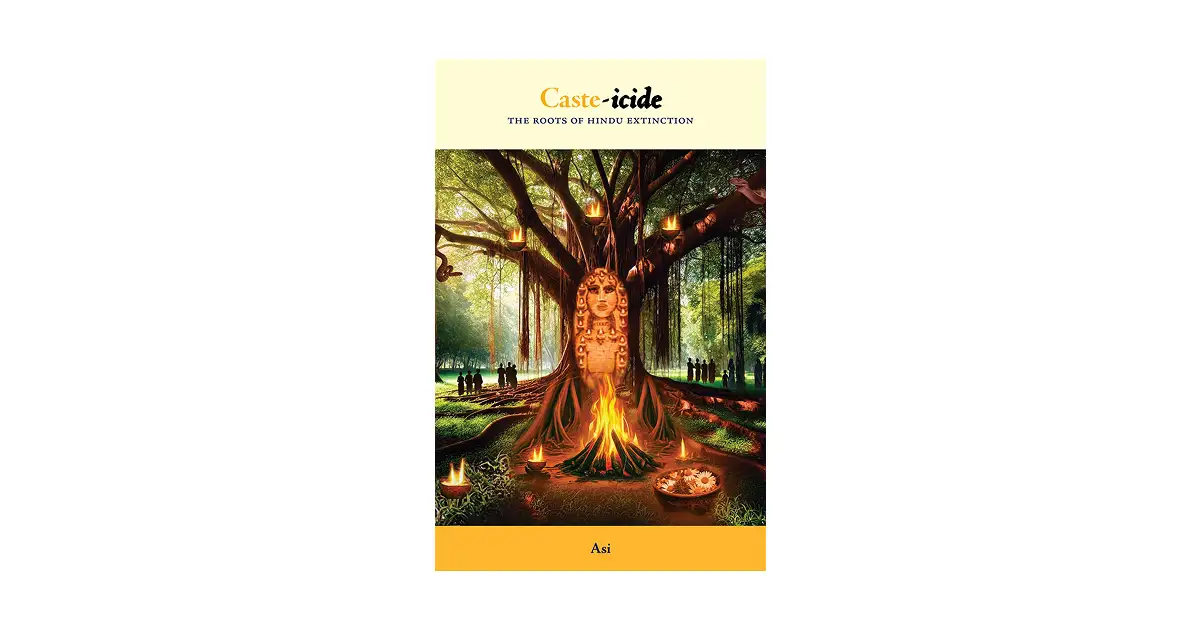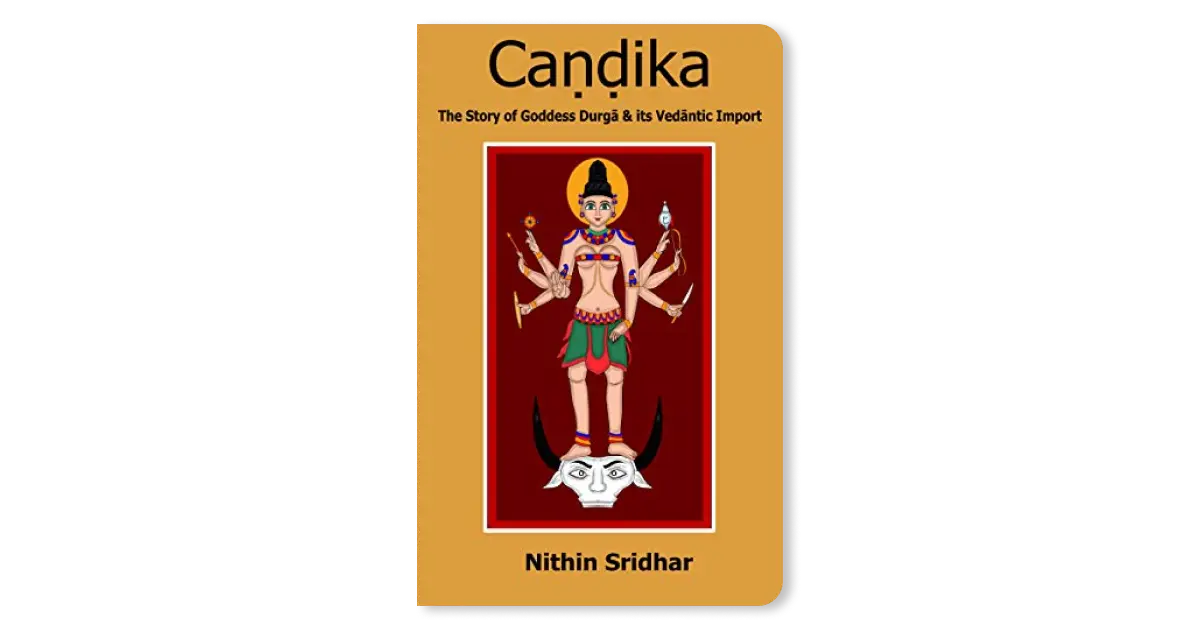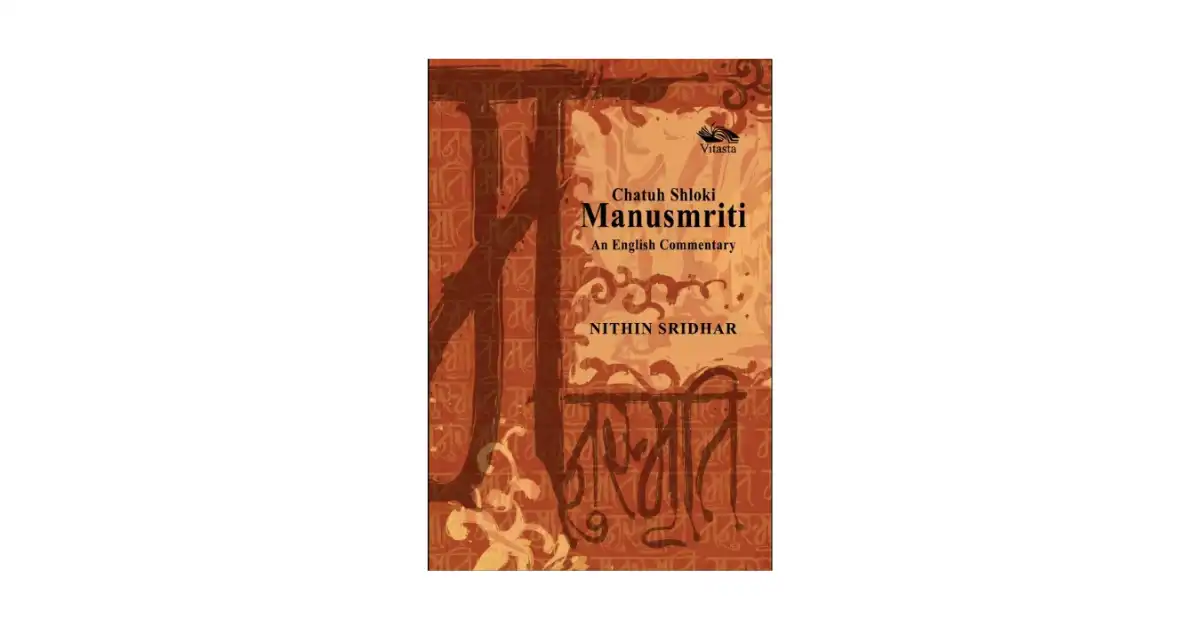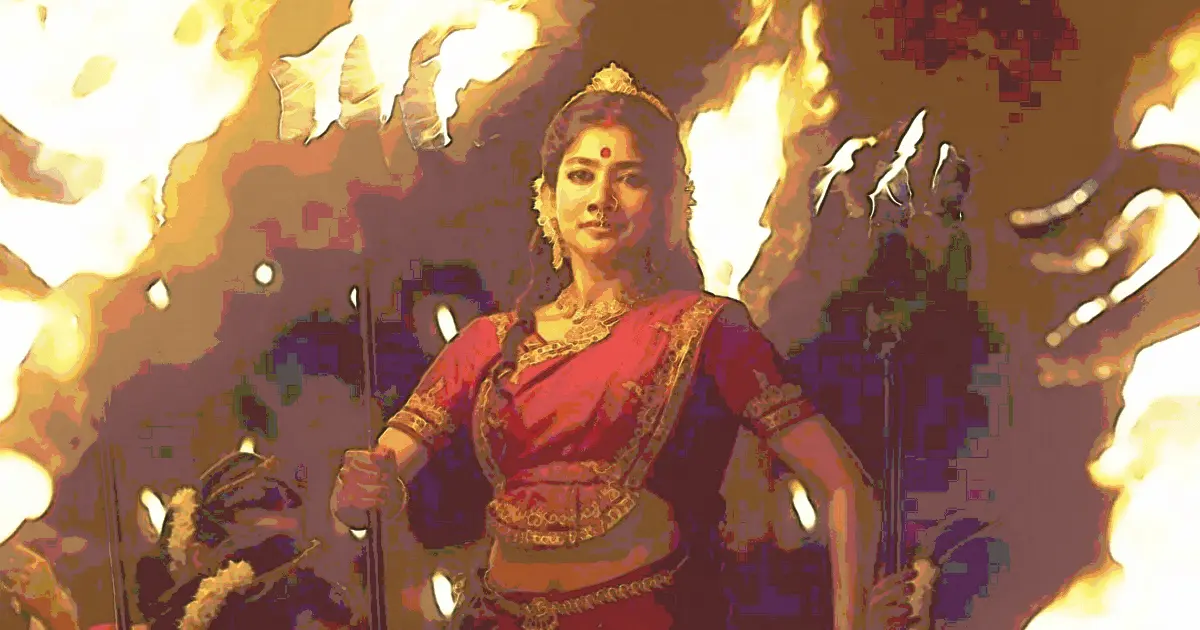‘The ‘Joy Bangla’ Deception: Bangladeshi Islamism Under The Facade Of Bengali Nationalism’ is a provocative book and deeply unsettling inquiry into the foundational myths of Bangladesh and their long-term impact on the Hindu-minority population. Harshly critiquing mainstream liberal narratives, the book presents a forceful counter-history - one that interrogates the politics of identity, exposes state-sanctioned discrimination, and laments the ongoing erasure of Hindu and Buddhist cultural presence in a land propped up internationally as a symbol of secular nationalism.
The book is organized into four sections, each unraveling a distinct layer of Bangladesh’s contested history and identity. The first section traces Muslim politics in Bengal from the 1920s through the 1952 language movement, revealing that the push for Bengali was initiated by Hindu leaders like Dhirendranath Datta rather than Dhaka University students, then swiftly hijacked. Section II follows the period from 1952 to 1971, dissecting the rise of the Awami League and its key ideologues, showing how the language issue receded once Bengali secured official status, while also detailing the suppression of the Bengali Hindu genocide. Section III examines post-1972 Bangladesh under Mujib’s “mask of secularity,” documenting the shift from covert to overt Islamisation, economic and cultural marginalization of minorities, and institutionalized dispossession through various laws. Section IV explores the appropriation of Bengali identity as a hegemonic project, culminating in two appendices that argue Bangladesh’s founding ideology is best understood as Islamic imperialism simply masquerading as nationalism.
The book begins by scrutinizing the deliberate erasure of Hindu contributions from the narrative of Bangladesh’s birth. In Chapter 1, the author describes how Dhirendranath Datta - whose proposal to make Bengali an official language of Pakistan was instrumental to the movement - is reduced to a mere footnote, underscoring an early effort to shape a strictly Islamist identity that excludes Hindus from the Bengali ethos. Prof. Gangopadhyay then traces the formation of the Awami Muslim League and recounts the shocking massacres of Bengali Hindus during Direct Action Day, as well as the lifelong Muslim League allegiance of Sheikh Mujibur Rahman. These chapters lay the groundwork for understanding how the country’s and the party’s Islamist roots were nurtured. The focus then shifts to Maulana Bhasani, detailing his rise to the party presidency at age seventy and his brazenly Islamist agenda - exemplified by his 1972 proclamation, “Assam is mine, West Bengal is mine, and Tripura, too, is mine”, revealing the expansionist impulse that underpinned what many wrongly perceived as secular nationalist politics.
A Counter-Narrative to the Liberal Mythos
The book is premised on a scathing critique of the liberal establishment for promoting Bangladesh as a model of secularism and tolerance. According to Prof. Gangopadhyay, this narrative has been less about the truth and more about ideological convenience. By emphasizing the country’s linguistic nationalism, liberals have argued that Islam in Bangladesh was rendered secondary - a move that not only set the country apart from other Islamic nations, but also allowed them to hold it up as proof that secularism is a culturally universal ideal. But as Gangopadhyay meticulously argues, this interpretation is deeply flawed. He contends that this glorification of language over religion is to enable the erasure of Hinduism from the region’s cultural and ethical foundations and cloak its extreme Islamic expansionist aspirations. The religious agenda behind the creation of Pakistan and subsequently Bangladesh are buried, along with the historical trauma of Partition and decades of minority persecution. Figures like Suhrawardy - implicated in the Direct Action Day massacre of 1946 - are still celebrated in Dhaka, while Bangladesh has offered no accountability whatsoever, not even symbolically, for its horrific violence against minorities.
The Hollowing of Bengali Identity and The Betrayal of ‘Joy Bangla’
In Chapter 11, Gangopadhyay examines the identity crisis afflicting Bengali-speaking Muslims themselves. Quoting V. S. Naipaul, he observes:
Islam has had a calamitous effect on converted people. To be converted you have to destroy your past, destroy your history. You have to stamp on it, you have to say my ancestral culture does not exist, it doesn't matter.
Prof Gandhopadhyay describes the effect of colonialism superimposed on the Islamic education system, along with the historical revisionism that Bangladesh’s government engaged in following independence. Chapter 12 focuses on the manner in which the country rewrote history in the service of Muslim Bengaliness - from erasing the icons of Bengali literature to downplaying the Hindu history and contributions to the region to the glorification of violent invaders like Bhakhtiyar Khalji as a hero and an Islamic icon. Fifteen years of uninterrupted Awami League rule left Bangladesh’s national identity in disarray, coalescing around a narrowly defined “Bengali” identity that equates citizenship with Muslim-majority status. Prof. Gangopadhyay argues that this rebranded Bengali identity - crafted to consolidate the seventy percent Muslim population of West Bengal and Bangladesh - delibrately excludes non-Muslims and distorts Bengali culture into a sectarian framework. This cultural exclusion feeds directly into political disenfranchisement. Though the Awami League is styled as “minority-friendly,” they have failed to protect Hindu citizens from electoral violence, land grabs, or religious targeting. In the popular imagination, Hindus are often seen as proxies for Indian interests - a perception that fuels constant resentment and violence.
Central to Gangopadhyay’s argument is the idea that the slogan “Joy Bangla,” originally a symbol of inclusive, anti-colonial nationalism rooted in the Bengal Renaissance, has become a smokescreen for an exclusivist, Islamist state. The book laments the loss of the pluralistic Bengali self - one that embraced both language and religious diversity - and warns against the conflation of Bengali identity with Islamic majoritarianism that characterises Bangladeshi rhetoric.
Hindu Genocide
Prof. Gangopadhyay’s book is as direct and hard hitting as can be, painting a dreary portrait of the Hindus’ condition in Bangladesh. Visibly moved by the riots that began in August 2024, he displays a profound empathy not only for the tragic historical violence against the Hindu minority but also for their ongoing persecution. The scale and frequency of violence against Hindus is truly staggering. The genocide that was orchestrated on 25 March 1971 at Jagannath Hall, where out of 66 recorded victims 63 were Hindus, marked the commencement of a systematic campaign in which an estimated 3 million Hindus were massacred over the decades, though they constituted barely 17% of the population. This targeted extermination was compounded by pogroms in 1950, 1964, and 1965, aided by Bengali-speaking co-conspirators known as Razakars and defended by Islamist parties like Jamaat-e-Islami.
Beyond these headline atrocities, the routine abduction, rape, arson, and looting documented by the Bangladesh Hindu Buddhist Christian Unity Council underline that the torture of Hindus has long become a normalized, daily occurrence. Furthermore, the demographic trajectory of the country underscores the enormity of the scale of persecution: in 1974, Hindus comprised 13.5% of Bangladesh’s population; by 2022, that figure fell to 7.95%. Dr. Barkat’s research reveals that between 1964 and 2013, an estimated 11.3 million Hindus were killed or driven out - an estimated exodus of 632 individuals per day. This is not a demographic accident, but the outcome of sustained pressure, persecution, and continuous efflux. If the trends continue, Barkat predicts that by 2043, there may be no Hindus left in Bangladesh. This gradual but relentless diminution - from a 15% share in 1971 to below 8% in 2022 - demonstrates the potency of sustained low-level violence and legalised dispossession.
The book then turns its gaze to another overlooked minority: the Buddhist Chakma community of the Chittagong Hill Tracts, illustrating another dimension of religious and cultural erasure. Indigenous to these hills and autonomous for centuries, the Chakmas refused to surrender their cultural identity to the Islamists - and paid a steep price. The Bangladeshi army, supported by Ansars and local defence parties, forcibly relocated tens of thousands into “cluster villages” after razing their homes. Conservative estimates report that over 20,000 Chakmas were killed or went missing, roughly 100,000 fled to India, and some 50,000 were internally displaced - figures that, given the community’s small population, amount to an ethnic catastrophe perpetuated through military violence and systematic displacement. The accounts only prove that Bangladesh’s minorities - whether Hindus, Buddhists, or tribal peoples alike - have suffered deliberate, sustained campaigns of exclusion and violence.
This travesty cannot be overstated: Hindus continue to face systematic violence and legalized erasure, yet many fellow Hindus remain either oblivious or unwilling to sound the alarm. The plight of Bangladesh’s Hindus is dismissed as a distant concern, while their persecutors operate with impunity. The book thus serves as an urgent wake-up call to the global Hindu community, which must confront this injustice, and to regional governments, whose policies have the power to either alleviate or exacerbate the suffering of millions.
The Noise for a Greater Bangladesh
The dream of a “Greater Bangladesh” has long been a potent ideological undercurrent among sections of Bengali-speaking Muslims, with its roots traceable to the very birth of the nation. As early as 1947, prominent Muslim leaders proposed an undivided Bengal that would include Hindu-majority regions like West Bengal, Tripura, and Assam - an audacious and deeply troubling ambition especially in the wake of the Calcutta killings and the Noakhali genocide. Though the proposal was defeated, the aspiration is far from dead. Leaders like Maulana Bhasani continued to publicly assert this vision, stating in 1972 that, “Assam is mine, West Bengal is mine, and Tripura, too, is mine,” framing these Indian territories as yet-to-be-liberated regions of Bangladesh. While politically active figures like Sheikh Mujibur Rahman masked such sentiments behind diplomatic decorum, they nonetheless acknowledged that the conceptual foundation of Bangladesh was tied to the vision of an undivided Bengali homeland. This ideology, driven by an Islamic-majoritarian claim over Bengali identity, continues to pose a significant geopolitical threat.
\
In addition to this, the strategic marginalization of Hindus within Bangladesh serves not only a domestic agenda but also bolsters this transnational ambition. If left unchecked, this ideological expansionism has the potential to destabilize not just West Bengal, but the entire Northeastern region of India - particularly the vulnerable ‘Seven Sister’ states - where ethnic complexities and demographic shifts are already a source of concern. Recognizing the historical and ideological moorings of this issue is crucial for safeguarding India’s sovereignty and regional stability.
Conclusion: “Bangladesh was and still remains East Pakistan”
The unfolding tragedy of Bangladesh is not merely a humanitarian concern - it is a geopolitical emergency with grave implications for India’s security and sovereignty. The dream of a Greater Bangladesh, openly articulated by ideologues like Maulana Bhasani and subtly endorsed by leaders like Sheikh Mujibur Rahman, is no longer a fringe aspiration - it is a creeping ideological conquest. The first tool of any imperial ambition is the rewriting of history and identity. In Bangladesh, the Bengali identity has been hijacked - stripped of its pluralistic, Hindu roots, and replaced with an Islamized narrative. From awarding Sheikh Mujibur Rahman the title of the “Greatest Bengali in a thousand years” to inserting fabricated racial theories that link Bengalis to Arabs and Turks, this manufactured identity seeks to erase all that is indigenous and Dharmic. Bengali Hindus, once the torchbearers of a great intellectual renaissance, have been reduced to a historical footnote - their icons vilified, their language distorted, their contributions erased from state-sanctioned memory. This subversion of the Hindu identity has had lethal real-world consequences. The ethnic cleansing of Hindus from Bangladesh is no longer incremental—it has entered its final phase after August 2024. The silence of the Indian state, particularly the so-called Hindu nationalist party in power, is a betrayal of historic proportions. Not only has New Delhi failed to act, it has actively suppressed its West Bengal wing from speaking out, ensuring that Bangladesh's Hindus are left voiceless and defenceless as they are pushed to the brink of extinction.
The left-liberal elite - both in India and globally - have sanitized this genocide under the garb of secularism and regional diplomacy. Meanwhile, the very fire that consumed East Bengal now threatens to engulf West Bengal. With nearly 30 million Muslims - one-third of its population - West Bengal is showing disturbing signs of Islamization. The ruling dispensation's adoption of “Joy Bangla” as a political slogan, combined with Islamist appeasement and a surge in election-time violence and terror activities, suggest that the state is slowly transitioning into a West Bangladesh. Alarmingly, the threat does not end there. Assam and Tripura are also caught in the Islamist crosshairs. The unchecked demographic changes, systematic radicalization, and erasure of cultural roots are not merely communal issues—they are acts of civilizational warfare. If India continues to ignore these signs, the flames of identity politics in Bangladesh may soon destabilize the entire Northeast, plunging the region into prolonged ethnic unrest and geopolitical vulnerability.
Prof. Gangopadhyay articulates that the only way forward is to reclaim the Bengali identity, with its Dharmic roots, Renaissance ideals, and Bhāratīya civilizational ethos. As Rabindranath Tagore once urged, Bengal must not drift into self-conceit but must reaffirm its unbreakable bond with Bharat. **A resurgence is still possible - but only if the truth is confronted, history is reclaimed, and the suffering of Bangladesh’s Hindus is no longer buried under the white noise of progressive denial.
The ‘Joy Bangla’ Deception is not a book for the faint-hearted. It is a visceral and passionate account of Bangaldeshi politics and history from a Hindu perspective, reflecting a deep commitment to preserving what Prof. Gangopadhyay sees as the true Bengali ethos. His tone, often polemical, reflects the urgency of his concerns. However uncomfortable a read, the book offers a critical intervention, disrupting prevalent narratives and raises difficult, often painful, questions about nationalism, identity, and memory in the Indian subcontinent.
The book can be purchased here:
